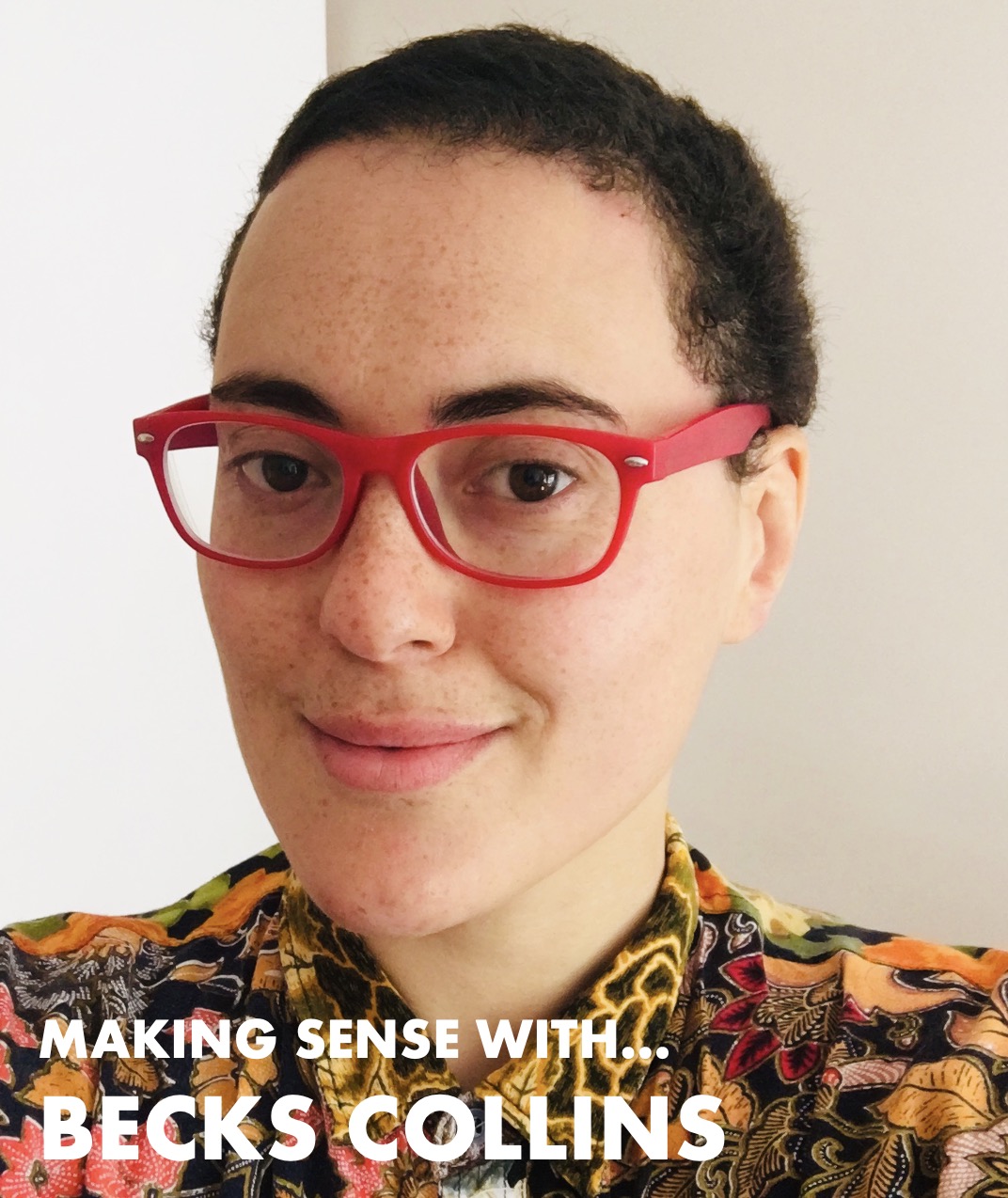Photo courtesy of Becks Collins
What makes a semiotician tick? SEMIOVOX’s Josh Glenn has invited his fellow practitioners in the field of commercial semiotics, from around the world, to answer a few revealing questions.
London…
SEMIOVOX
When you were a child/teen, how did your future fascination with symbols, cultural patterns, interpreting “texts,” and getting beneath the surface of daily life manifest itself?
BECKS COLLINS
I’m of mixed heritage and moved a lot as a kid — spending long stretches in the U.K., Trinidad & Tobago, Egypt, Jerusalem, Pakistan, Thailand. I learned how to quickly identify religious and cultural norms and important pop-culture references in each new place. That way, I could be respectful and connect with people even if I didn’t know the language.
I was also hyper-aware of different ‘masculine’ and ‘feminine’ symbols in each culture, as I tried to figure out my own gender identity.
SEMIOVOX
Describe your first encounter(s) with the theory and practice of semiotics.
BECKS COLLINS
There was a lecture on semiotics during my MA (in Culture and Creative Industries) at King’s College London that covered some basics: signifier, signified, Joseph Kosuth’s One and Three Chairs. Semiotics made a lot of sense, but I couldn’t quite see how the theory could be put into practice. It was presented as a strictly academic subject, just as I was realising that I didn’t want to pursue academia as a career path.
SEMIOVOX
How did you find your own way to doing semiotics?
BECKS COLLINS
I had no idea it was something you could do! I was working in the arts when my good friend Gemma Jones brought me on to freelance for Space Doctors. That’s when I fell in love with it. The transition from the arts to semiotics felt like a natural progression, because so much of the work is about noticing the intangible details that inspire people.
I joined Space Doctors for a while, then Canopy Insight, now I’m freelance again.
SEMIOVOX
What are the most important attributes of a good semiotician?
BECKS COLLINS
- Openness. It’s important to remain receptive to new meanings, even if you’ve worked on the same subject recently.
- Patience. The best answer may not always be immediately apparent. Put it down, take a break, walk away, come back — and it’ll reveal itself.
- Confident communication. A lot of our work relies on our ability not merely to recognise meaning but to convey it.
SEMIOVOX
What three books about semiotics have you found the most useful and enlightening in your own work?
BECKS COLLINS
I’ve never read a semiotics book cover to cover, only excerpts. I do read a lot of sci fi, fantasy and speculative fiction, which has helped me think about cultural change in a different way. Some recent favourites have been:
- Babel by R.F. Kuang. A ‘dark academia’ fantasy novel that focuses on the use of language and translation as a tool of colonialism.
- A Psalm for the Wild-Built by Becky Chambers. A solarpunk novella that imagines what society would look like if people put nature first.
- Clap Back by Nalo Hopkinson. A speculative-fiction short story about how nano technology may be used in the future to preserve culture through art… but also, potentially, distort it in the process.
SEMIOVOX
When someone asks you to describe what you do, what is your “elevator pitch”? How do you persuade a skeptical client to take a chance on using this tool?
BECKS COLLINS
‘I study how culture is changing — and what that means for brands, companies, and institutions that wish to connect with a particular aspect of culture.’ Also: ‘A lot of research methods focus strictly on people. Semiotics focuses on everything, people included.’
SEMIOVOX
What specific sorts of semiotics-driven projects do you find to be the most enjoyable and rewarding?
BECKS COLLINS
I’ve started to specialise in gender, diversity and inclusion projects, and sustainability projects. It’s rewarding when my work delves into areas I feel strongly about. I did a piece of work on racism recently, and I am very happy this topic is being addressed. I also love anything to do with subcultures, art, and entertainment — because that’s just fun.
SEMIOVOX
What frustrates you about how semiotics is practiced and/or perceived, right now?
BECKS COLLINS
I’d love for more diverse or smaller-scale institutions to access semiotics as a tool. Beyond the big FMCG and tech companies, it feels like there’s not a huge amount of awareness about semiotics — but it really can be used in any context, by any organisation.
SEMIOVOX
What advice would you give to a young person interested in this sort of work?
BECKS COLLINS
Go for it! There is no singular path to becoming a semiotician. If semiotics inspires you, if you’re obsessed with culture, if you over-analyse everything… then that’s enough to get started. Semiotics is, by definition, about fresh perspectives.
On the practical side: Engage with the community, read papers, attend conferences, connect with people. If you want to freelance, write a short piece of analysis or an article and send it to people you want to work with. Talk about your specialisms and interests — doing so helps you stand out, but it won’t prevent you from landing broader projects as well. I still work on anything and everything!
MAKING SENSE series: MARTHA ARANGO (Sweden) | MACIEJ BIEDZIŃSKI (Poland) | BECKS COLLINS (England) | WHITNEY DUNLAP-FOWLER (USA) | IVÁN ISLAS (Mexico) | WILLIAM LIU (China) | SÓNIA MARQUES (Portugal) | CHIRAG MEDIRATTA (India / Canada) | SERDAR PAKTIN (Turkey / England) | MARIA PAPANTHYMOU (Greece / Russia) | XIMENA TOBI (Argentina) | & many more.
Also see these global semio series: MAKING SENSE (Q&As) | SEMIOFEST SESSIONS (monthly mini-conferences) | COVID CODES | SEMIO OBJECTS | COLOR CODEX | DECODER (fictional semioticians) | CASE FILE | PHOTO OP | MEDIA DIET.


